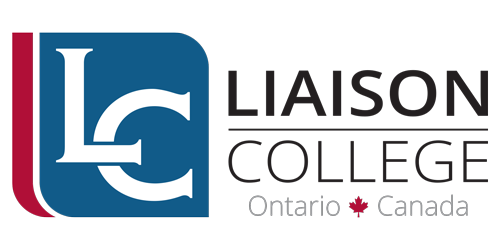Culinary Management
Culinary Management Diploma
680 Hours – 35 Weeks Full-Time
This is Liaison College’s ultimate diploma program, which combines the advanced culinary skills of the Chef de Cuisine program with the business skills of the Entrepreneurial Skills for Chefs certificate.
Program Highlights

Sanitation, Safety and Equipment
- Interpretation of terms
- Personal hygiene
- Food contamination
- Safe food handling
- Construction standards
- Maintenance standards
- Sanitation codes
- The Health Protection and Promotion Act
- Food poison prevention
- Dishwashing

Basic Nutrition
- Major nutrient identification
- Energy sources
- Lipids
- Proteins and vegetarian diets
- Carbohydrate and dietary fiber
- Vitamins, processing and additives
- Mineral elements
- Water – sources, value & quality
- Developing food patterns

Communications – Basic
- Basic business communications
- Accident reports
- Resume preparation
- Cover letters
- Application forms
Calculations – Basic
- Addition, subtraction, multiplication and division
- Common fractions
- Decimal fractions
- Percentages
- Standards of measurement
- Fahrenheit to Celsius conversions
Kitchen Management
- Hospitality / tourism perspectives and organizations
- Orientation, training and career planning
- Menu planning and basic marketing
- Table service
- Basic kitchen calculations
- Basic purchasing
- Kitchen organization, maintenance and security
Food Theory – Basic
- Major cooking methods
- Vegetable cuts and flavoring agents
- Stock and soup cookery
- Sauce cookery
- Breakfast and short order cookery
- Vegetable, pasta and rice cookery

Culinary Techniques – Basic
- Kitchen tools – identification, storage and handling
- Uniform standards
- Proper food storage and packaging
- Fire procedures
- Stock cookery
- Thickening agents
- Soup cookery
- Sauce cookery
- Egg and breakfast cookery
- Short order cookery
- Vegetable, pasta and rice cookery
- Fish and shellfish cookery
- Meat entrees
- Salads
Bake Theory
- Flour production and applications
- Types of shortening
- Sugar commodities
- Eggs in baking
- Dairy products
- Use of salts
- Leavening agents
- Chocolate and flavorings
Communication – Advanced
- Formal reports
- Business correspondence
- Resume development and career planning
- Presentation skills Calculations – Advanced
- Business calculations
- Cost / sales calculations
- Break-even analysis
- Inventory calculations
- Yield calculations
Food, Beverage and Labour Cost Controls
- Objectives and applications of a food and beverage control system
- Food and beverage cost controls
- Management principles
- Employment and labour laws
- Employment recruitment, selection and training
- Performance assessment and productivity standards
- Labour relations
- Labour cost controls
Pastry, Desserts and Related Theory
- A la carte cold and hot desserts
- Pies, tarts, and flans
- Choux paste products
- Yeast products
- Puff pastry
- Cheese cakes, special occasion cakes
Food Theory – Advanced
- Deep frying and fish cookery
- Meat and poultry cookery
- Wines, spirits and beers in cooking
- Garnishes & derivative sauces
- Buffet preparation
- Convenience and microwave-ready foods
Culinary Techniques – Advanced
- Fish and shellfish
- Canapés, pate and hors d ‘oeuvres
- Cold buffet and Soups
- Desserts
- Poultry and game
- Lamb, pork, veal and beef cookery
- Pasta and rice cookery
- Soufflés
- Dining Room – Mise-en-Place
Cuisine – A La Carte
- Introduction
- Appetizers, soups and salads
- Vegetables, potatoes, pastas and rice
- Desserts
- Equipment identification, use and maintenance
Techniques of Baking
- Pie dough
- Piping batters
- Quick breads and muffins
- Cream desserts
- Icings
- Yeast dough
- Choux paste products
- Pastries
- Cake preparation
Quantity Food Preparation
- Rules of personal hygiene and sanitation
- Safety regulations
- Large kitchen equipment identification
- Stock, soup and sauce cookery
- Poultry, lamb, pork, beef, fish cookery
- Potato and vegetable cookery
- Salad preparation
- Dessert preparation
Introduction to the Chef as Businessman
- Overview of the industry
- A day in the life of a chef entrepreneur
- What you need to become a successful chef entrepreneur
Creating a Business
- Business plan
- Market research & strategic plan
- Financial planning
- Legal & government considerations
Strategic Marketing Plan
- Creating an image or brand
- Marketing outline
- Delivering your message
- Marketing tools
- Creating marketing materials
Administration Model
- Business structure
- Accounting options
- Insurance
- Financing

Menu Planning
- First aid
- Chef safety
- How do people eat
- Service variations
- Costing
- Special diets
- Nutritional labeling
- Timing for success
Tools & Equipment
- The client package
- Checklists
- Containers – storage, freezing, reheating
- Tools of the Specialist Chef trade
Purchasing
- Choosing suppliers
- Creating the shopping list
- Ordering
- Tracking mileage
- Client gifts
- Timing for success
Working in the Client’s Home
- Planning your work flow
- Client interview & site inspection
- Setting up your workspace
- Trouble shooting
- Clean up & security
- Evaluation
Safety & Sanitation
- Note: students must have a valid Safe Food Handlers Card
- In home basics
- Bacteria
- Food handling
- Cleaning
- Dishwashing
- Safety practices
Marketing a Chef Service
- Leading questions
- Using the phone script
- FAQ’s & objections
- Booking the interview
- Questionnaire
Other Revenue Sources & Concepts for the Entrepeneurial Chef
- Strategic partnerships
- Networking
- Catering
- Interactive parties
- Private cooking demonstrations/lessons
- Menu planning
Entrepreneurial Chef Culinary Techniques
- Cooking methods
- Proteins, starches, produce
- Food quality
- Packaging for freezing/reheating
